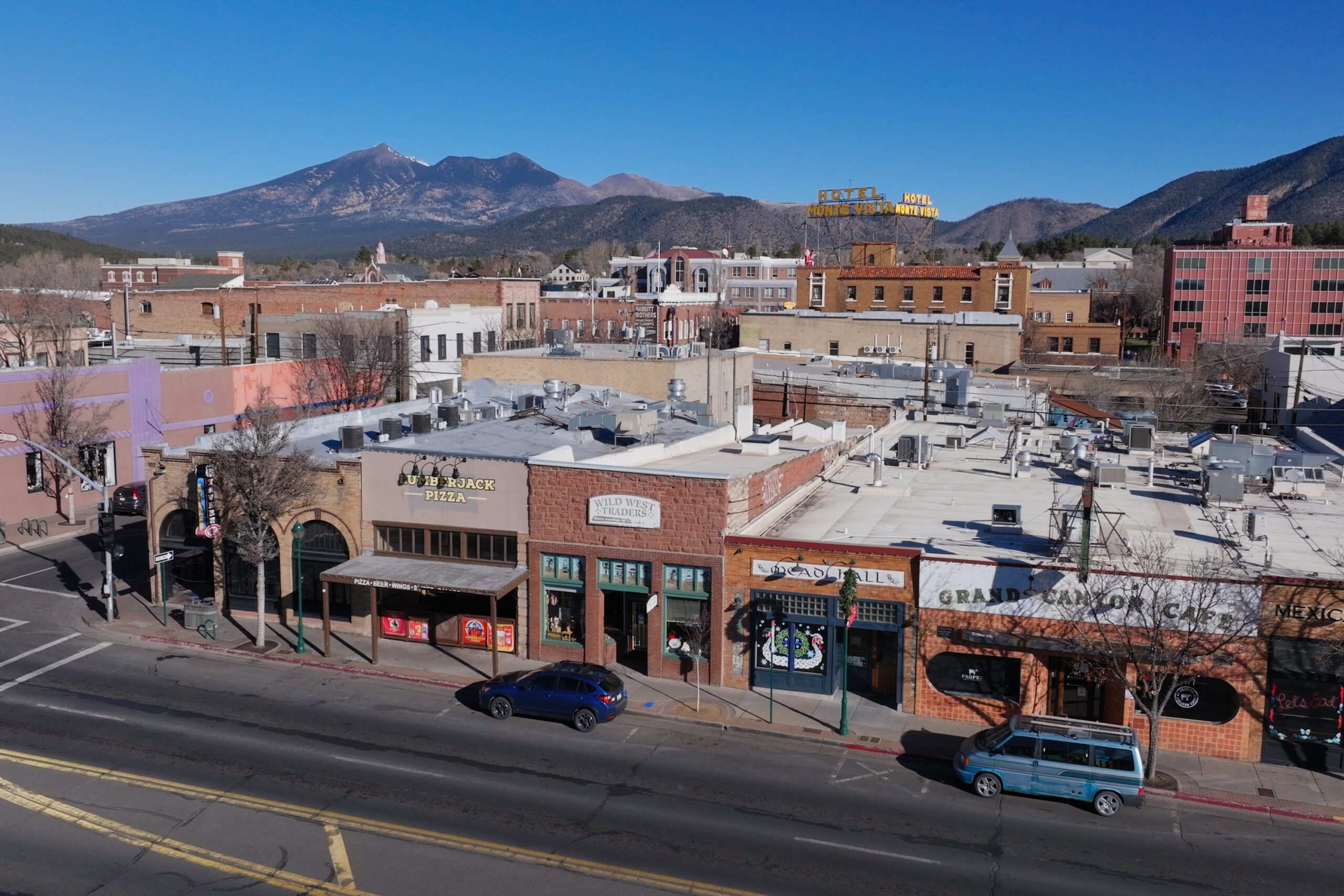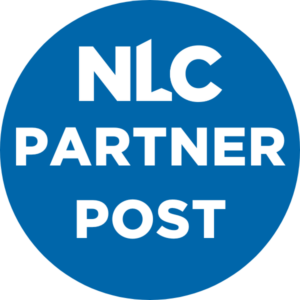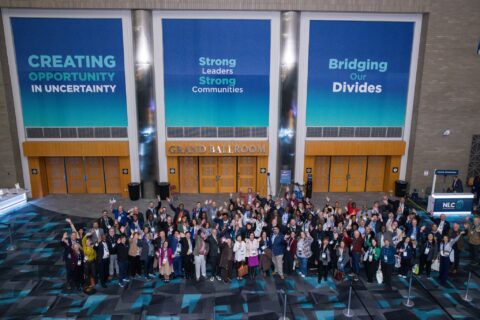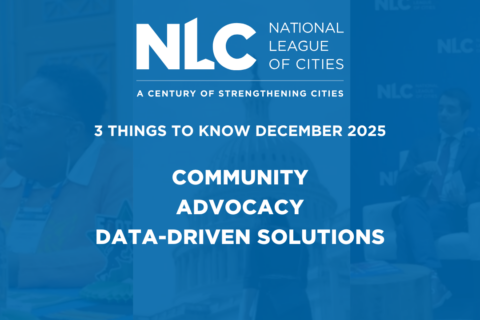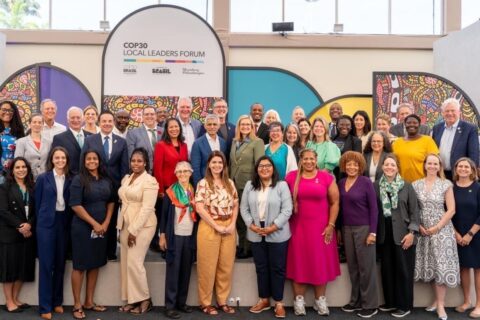Authored by Mayor Becky Daggett, Flagstaff, AZ
Think public transit only benefits urban areas? Think again.
When we talk about transit in America, the conversation usually centers on bigger cities like New York City, Los Angeles, Chicago and maybe Washington, D.C. or Boston. But there are about 320 communities, including Flagstaff, in the United States that have a big transit story to tell, too. A new national report from Transit Works for America explores public transportation in these 320 small urban communities, places where the population ranges from 50,000 to 200,000.
Flagstaff’s Transit Story
With health care facilities, educational institutions and a wide variety of businesses, Flagstaff serves as the regional hub for the surrounding Coconino County, which is twice the size of the state of Maryland. Eighty-three percent of city residents live within ¾ mile of transit. As more new residents arrive, the need for affordable transportation has grown, and Mountain Line, the public transit agency in Flagstaff, has stepped up to meet the need with reliable fixed-route service, on-demand micro transit, vanpools and ADA paratransit.
Transit and School Bus Partnership
Post-pandemic, ridership has steadily recovered, but the agency has at times had to cut service due to a shortage of qualified drivers (an issue affecting transit agencies nationally after the pandemic). From that challenge, a new partnership emerged.
The Flagstaff Unified School District (FUSD) was also facing a shortage of drivers, leading to overcrowded school buses and long rides for students. Realizing the situation was unsustainable, the school district eliminated yellow bus service for out-of-district middle school students and all high school students within the city limits. FUSD partnered with Mountain Line to encourage those students to ride the city buses instead, using passes supplied by FUSD. Mountain Line rose to the challenge, working closely with the school district to educate students and their families on nearby routes and how to use the bus system. As a result, more than 1,000 students (about 60% of those eligible) are now riding public transit to school, reducing traffic in school zones and saving money for the school district. FUSD Superintendent Mike Penca says he “doesn’t know what we would have done” without Mountain Line.
Community Support and Transit Funding Grow Together
In November 2024, voters in Flagstaff approved a nearly 70 percent increase in the portion of the sales tax dedicated to transit, bringing it to a half- cent per dollar and allowing the city to continue supporting Mountain Line’s 5-year growth plan. The growth plan includes service to more areas, later hours and an increase in both weekday and weekend frequency. Voters supporting the tax recognized the importance to the regional economy of supporting the tourism and hospitality industry, which requires a significant weekend and evening workforce.
In Flagstaff, while city and county contributions and rider fares contribute to Mountain Line’s success, federal funding provides a significant portion of Mountain Line’s resources. All the authority’s buses have been purchased with federal funding, and the authority intends to use federal funding to replace its current buses as they reach the end of their useful life.
Share Your City’s Transit Impact with Congress
As the cost of car ownership increases and America’s population ages, demand for transit is growing. Transit provides an affordable option that allows everyone — including older adults, people with disabilities, youth and people without cars — to continue participating in the economic and social life of their community. To meet this demand, transit leaders are finding innovative ways to provide service.
If federal transit funding were reduced, the impact would be felt by riders which is why the upcoming renewal of the federal transportation bill with Congress is so important to communities. Flagstaff, like many smaller cities across the country, are innovating when it comes to transit, but they need continued federal support to do so. Too often, these agencies must make difficult trade-offs, shifting and even cutting services as resources are insufficient. Every community deserves affordable, reliable mobility — whether it has 100,000 people or 10 million.
Let’s keep telling Congress to invest in transit for cities like ours, because we have a great story to tell.
NLC in Action
Earlier this year, NLC’s Transportation Committee Chair, Vanessa Fuentes, Mayor Pro Tem of Austin, Texas, testified before the first meeting of the House Transportation and Infrastructure Committee. Learn more about the key five messages, and explore important federal transportation programs for local governments.
